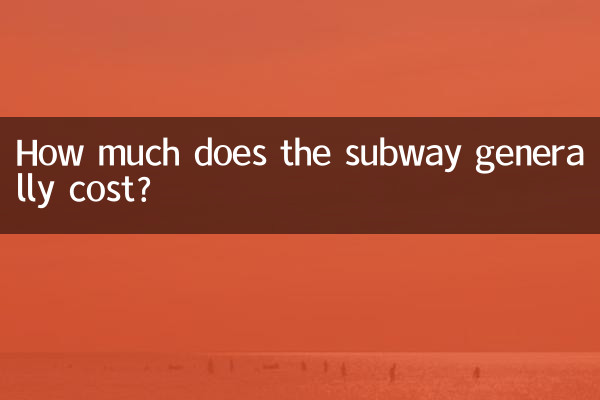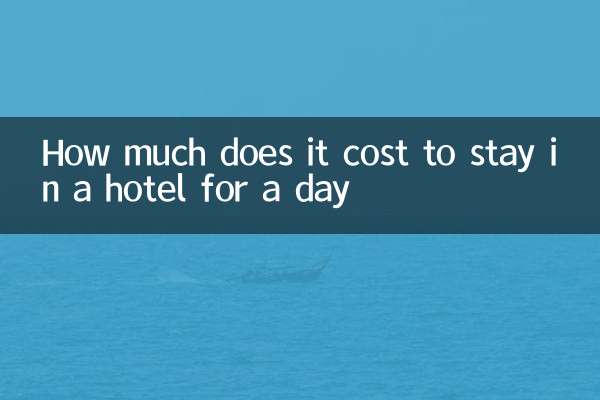How much does the subway generally cost? Hot topics across the Internet and structured data analysis
In the past 10 days, the topic of subway fares has once again aroused heated discussion among netizens. As urban transportation costs change, people's attention to subway prices continues to rise. This article will analyze the current situation of subway fares for you through structured data based on the hot spots across the entire network, and attach relevant comparative analysis.
1. Comparison of subway fares in major cities across the country (latest data in 2023)

| City | Starting price (yuan) | Maximum fare (yuan) | Average one-way fare (yuan) |
|---|---|---|---|
| Beijing | 3 | 10 | 5-6 |
| Shanghai | 3 | 15 | 6-7 |
| Guangzhou | 2 | 14 | 5-6 |
| Shenzhen | 2 | 14 | 5-6 |
| Chengdu | 2 | 10 | 4-5 |
2. Popular discussion focus on subway fares
1.Controversy over fare increase:Recently, some cities have proposed subway fare adjustment plans, causing citizens to worry about increased commuting costs. For example, a second-tier city plans to adjust the starting price from 2 yuan to 3 yuan. Netizens generally believe that the increase is too high.
2.Comparison of preferential policies:Preferential methods such as student cards, senior citizen cards, and transportation joint cards have become hot topics of discussion. Beijing and Shanghai offer more discounts to local residents, while some new first-tier cities are attracting passengers with transfer discounts.
3.Metro vs other modes of transportation:On social platforms, "How much cheaper is the subway than taking a taxi?" has become a hot topic. Taking a 10-kilometer commute as an example, the subway fee is about 4-6 yuan, while the online car-hailing fee may be as high as 30-50 yuan.
3. Comparison of international subway fares (reference data)
| city(country) | One-way fare (equivalent to RMB) | Remark |
|---|---|---|
| Tokyo (Japan) | 15-30 yuan | Charged by distance |
| New York (USA) | 18 yuan | Flat fare |
| London (UK) | 20-50 yuan | Partition billing |
4. How to save the cost of subway travel?
1.Apply for a monthly or sub-card:Most cities offer discounts on regular tickets. For example, Chengdu’s “Tianfutong” monthly card can save 20% on fees.
2.Traveling during off-peak hours:Some cities offer discounts during off-peak hours. For example, Shenzhen can enjoy a 20% discount if you ride before the morning rush hour.
3.Combined public transport:Use the "subway + bus" transfer discount, for example, Guangzhou will save 1 yuan for transfers within 1 hour.
5. Forecast of future subway fare trends
Based on the opinions of industry experts, future subway fares may exhibit the following characteristics:
-Dynamic pricing:Similar to the airline industry's floating fare mechanism, prices may rise during peak hours.
-Diversified payment:New technologies such as facial recognition and mobile phone NFC will gradually replace physical tickets.
-Cross-city interconnection:After metropolitan area subway networks are interconnected, a cross-city unified pricing system may emerge.
From the above analysis, it can be seen that subway fares are not only related to daily travel costs, but also a microcosm of the city’s development level. It is recommended that passengers choose an appropriate ticketing plan based on their own needs and pay attention to the latest local policy changes.

check the details

check the details